Guadalajara's Top 15 Tourist Attractions
Despite being the state capital of Jalisco and the second-largest city in Mexico, Guadalajara has managed to maintain the distinct personality of a community cognizant of its own customs.
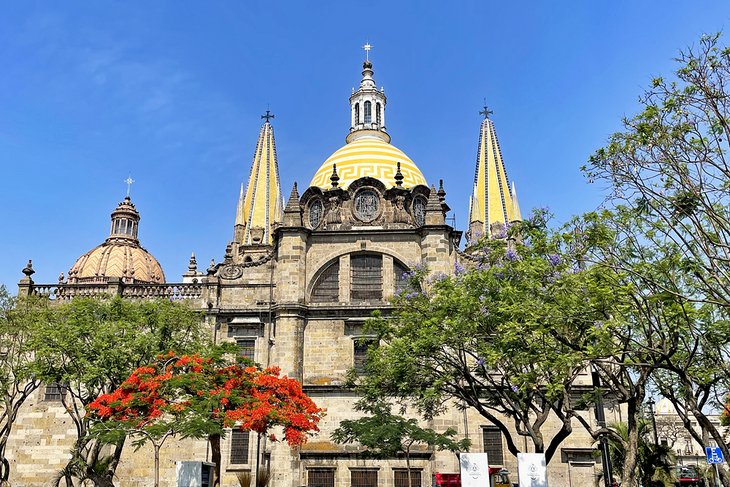
With its broad boulevards lined with trees, green plazas, Spanish-inspired architecture, and bustling sidewalks filled with events and attractions, the city has a distinctly European feel. Guadalajara is a bastion for Charreadas, the Mexican version of the rodeo, as well as a center for mariachi music.
The Jarabe Tapatio, a well-known folk dance performed by the Tapatios, as the inhabitants of Guadalajara are known, is celebrated. When people think of Mexican folk traditions, they frequently conjure up these three things together, and Guadalajara is the hub of them all.
Its pleasant subtropical temperature makes it a simple city to explore. The city's four splendid squares, which are conveniently connected and placed in the shape of a cross, make it simple to travel. The city's top tourist attractions and activities are located around these four wonderful squares.
Although much smaller and less bustling than Mexico City, Guadalajara is just as diverse and culturally rich. See our list of the top tourist attractions in Guadalajara for suggestions on where to go.
1. The Cabaas Cultural Institute
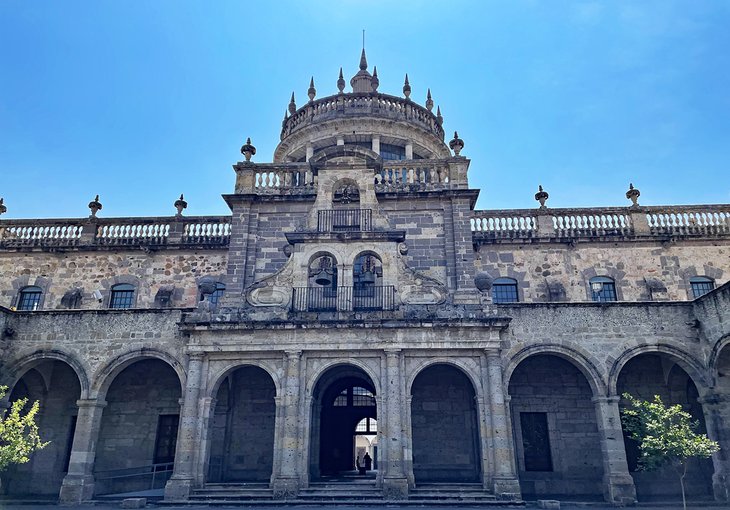
The magnificent Neoclassical former hospital and orphanage known as Institute Cultural Cabaas, which is included on the World Heritage list and was once known as Hospicio Cabaas, is located in the downtown historic core.
The Cabaas Cultural Institute and the Cultural Heritage of Humanity are currently housed in the complex. The collection of 57 exquisite paintings painted by José Clemente Orozco, which are widely regarded as among his best works, is the main attraction here, in addition to the building's elegant architecture, which was inspired by comparable designs in Paris and Madrid.
The enormous nave and cupola are adorned with the majority of the murals, including his well-known The Man of Fire (El Hombre del Fuego) mural. It is highly advised to take one of the English or Spanish-speaking guided excursions.
Visit the enormous Market Hall (Mercado Libertad) nearby afterwards to shop for local attire, pottery, paper flowers, and musical instruments. It is South America's biggest indoor market.
2. the Cathedral of Guadalajara

The stunning Guadalajara Cathedral (Catedral de Guadalajara) stands with its façade facing the adjacent Plaza de los Laureles, a smaller plaza with an amazing fountain, although taking up a large portion of the wonderful public space known as Plaza de Armas.
The cathedral, although largely Baroque in appearance, exhibits a wonderful mingling of diverse forms, especially in its lovely predominantly Gothic interior. It was constructed between 1558 and 1616 and significantly changed throughout later centuries. Several of Mexico's best painters, including Cristóbal de Villalpando, Miguel Cabrera, and Murillo, are credited with creating the paintings in many of the chapels. The Assumption of the Virgin Mary, one of Murillo's most exquisite works, hangs above the sacristy's entrance.
3. the Sant'simo Sacramento Expiatory Temple (Templo Expiatorio del Santo Sacramento)
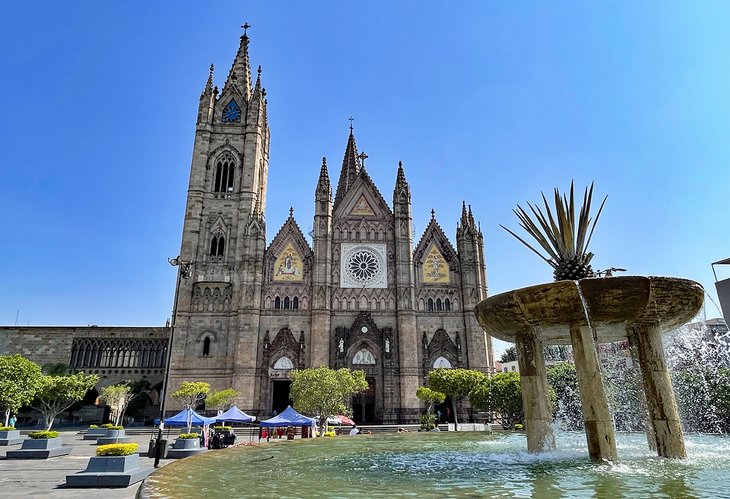
Although being one of Guadalajara's more recent churches—work on it began in 1897 and wasn't completed until 1972—the Templo Expiatorio del Santsimo Sacramento is unquestionably among the best places of worship in the city.
The neo-Gothic church is renowned for its lavishly adorned exterior and numerous European-made parts. Highlights include its exquisite mosaics from Italy, one-of-a-kind German clock, finely carved doors inlaid with bronze reliefs, and a magnificent carillon capable of playing 25 different pieces of music while figures of the 12 Apostles move around it. This carillon can also be played from inside the church.
Temple of Atonement (Templo Expiatorio del Santo Sacramento)
Temple of Atonement (Templo Expiatorio del Santo Sacramento)
The building's exquisite French stained-glass windows and the lavishly decorated Golden Altar with its numerous biblical stories are also fascinating.
4. The Executive Mansion
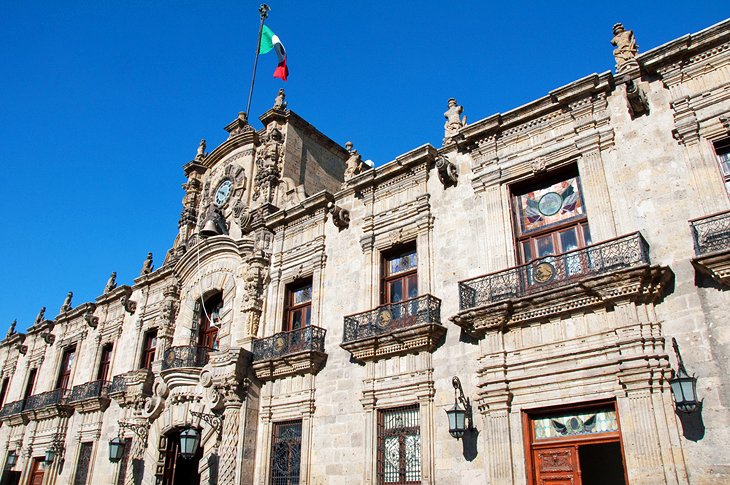
The Government Palace is located on the Plaza de Armas, the best of Guadalajara's four main squares, just a few steps from the cathedral. This magnificent Baroque structure, which was begun in 1643 and finished in 1774, is well worth a visit because of its numerous columns with zigzag ornamentation, huge volutes, and Churrigueresque pilasters (estpites).
The building's elegant antique staircase and several murals by renowned fresco artist José Clemente Orozco, a native of the state of Jalisco, depicting the War of Independence and the heroes of the three Mexican conflicts, are notable interior highlights.
5.Theatre Degollado
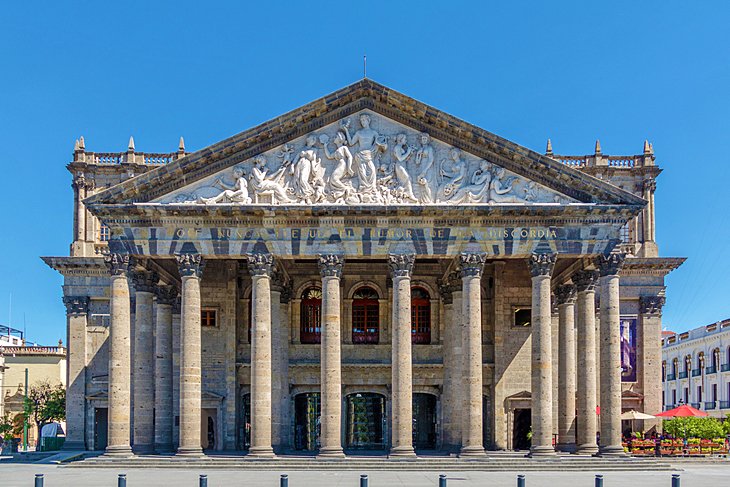
The most significant and stunning performing arts venue in the city is the Neoclassical Theatre Degollado, which is located across from the cathedral. This magnificent theater, which opened its doors in 1866, is well worth seeing because of its exquisite architectural elements and opulent interior decor. 16 Corinthian columns and a marble relief of Apollo flanked by the nine muses are visible on the outside.
The theater is home to the Guadalajara City Ballet and the Philharmonic Orchestra of Jalisco, among other local cultural organizations. It also holds international Mariachi competitions and is renowned for its exceptional acoustics. It's worth peeking inside even if you can't attend a concert here to gawk at the lavish, golden décor. Five tiers of balconies rise above the stage like a crimson and gold layer cake, and the ceiling is adorned with dramatic murals showing episodes from Dante's Divine Comedy.
6.Guadalajara Zoo
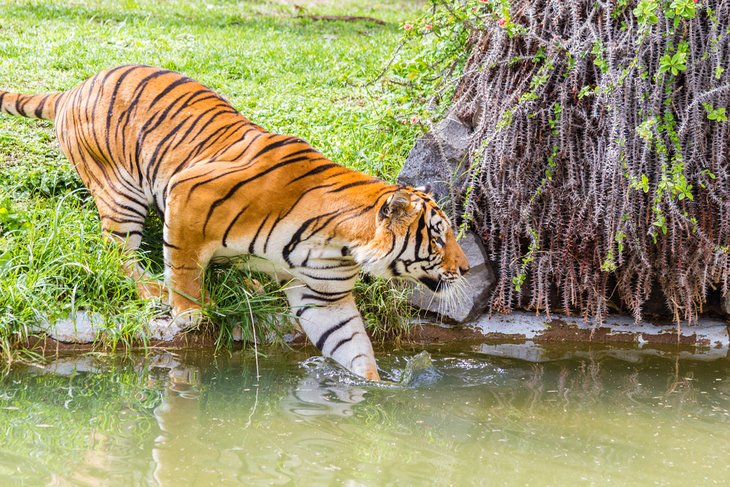
The Guadalajara Zoo (Zoológico Guadalajara) is a short drive north of the city. This entertaining site is one of the biggest and most significant zoos in Latin America. It also has a lovely setting, looking out over the gorgeous Santiago Gorge.
Features of its animal collection include numerous endangered species like Mexican wolves, white lions, Bengal tigers, and black panthers, as well as a sizable monkey contingent including gorillas and orangutans.
A sizable aquarium and a reptile cage with several lizards, snakes, and spiders are among the other highlights. The zoo is renowned for its expansive aviaries, two of which are specifically devoted to tropical and songbird species. The exciting Safari Masai Mara tour of the African savannah, which is home to antelope, rhinoceros, and other animals, is perfect for children.
7. Frescoes by José Clemente Orozco

Several locations throughout the city display works by José Clemente Orozco, one of Mexico's most well-known artists. In the Instituto Cultural Cabaas building, there are frescoes in a former church that showcase some of his best work. These enormous murals, which were painted between 1938 and 1939, feature the Four Elements, Art, Science, the Conquest, and the Four Horsemen of the Apocalypse in addition to other themes.
The magnificent fresco The Man of Fire (El Hombre del Fuego) in the dome is the high point.
The complex's several rooms are also interesting because they house a variety of exhibits centered on Orozco's life and works. The Government Palace is another place where Orozco's frescoes can be found.
8. Rotonda de Los Jaliscienses Ilustres
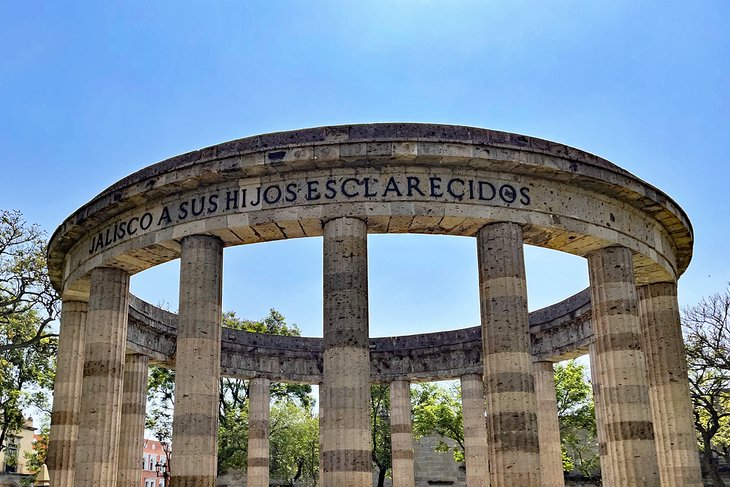
The Rotonda de Los Jaliscienses Ilustres (Rotunda of the Illustrious Jaliscienses), one of the city's most unique landmarks, is located in a lovely park-like setting just outside Guadalajara Cathedral in Plaza de Armas.
This massive circular stone monument was built in 1952 to celebrate the most notable historical characters in the state, including renowned artist José Clemente Orozco, whose work can be seen in murals all over the city. It has 17 towering columns and contains the remains of 98 significant people. Several of these people have statues adorning the nearby grounds.
Hot Tip: Visit the location after dusk when it is spectacularly lit up, with an added impact provided by a blazing cauldron in the center of the rotunda.
9. Bosque Colomos and Park Agua Azul
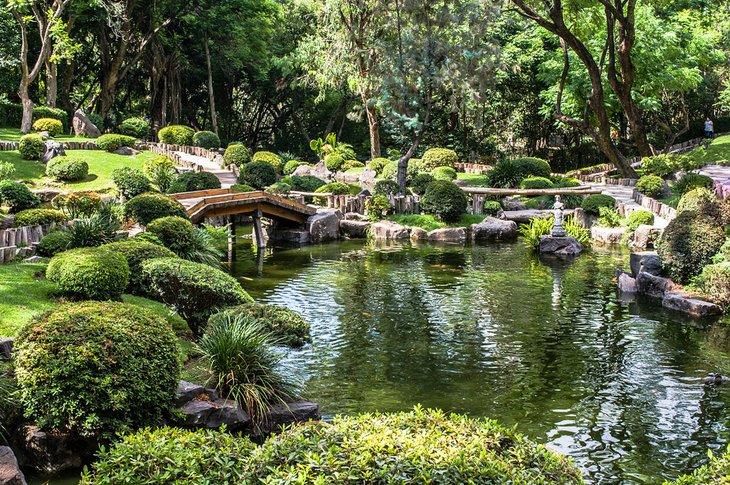
The stunning Parque Agua Azul, or Blue Water Park, is Guadalajara's most well-liked public park. The 168,000 square meter park, which was first opened in 1952, is a lovely spot to meander among the beautifully designed gardens and trees.
A tropical orchid house, a butterfly house, and an aviary, which are all home to several indigenous species, are among the highlights. A tiny anthropological museum (the Museum of Paleontology), an outdoor theater, and a flower market are all located in the nearby Casa de las Artesanas, which is well worth seeing.
Looking to explore Guadalajara’s unusual and unique attractions? Interesting sites like Telmex Building and Templo Expiatorio Clock are just a few of the very many diverse things visitors can do in Guadalajara. Read more here: https://t.co/1GRFD2S34F #VisitGuadalajara pic.twitter.com/qvOtPx4sVF
— Go To Guadalajara (@GoToGuadalajara) June 12, 2022
Bosque Colomos is one of Guadalajara's other well-liked parks. This tranquil green area provides a soothing escape from the bustle of the city. It is densely forested in some areas and is broken up by meandering canals where ducks glide. Running tracks, a serene Japanese garden, and a cultural center with classes in folk dancing, painting, drawing, and sculpture are some of the other attractions in this area. Some popular activities around here include picnics and birdwatching.
10. The Guadalajara Regional Museum
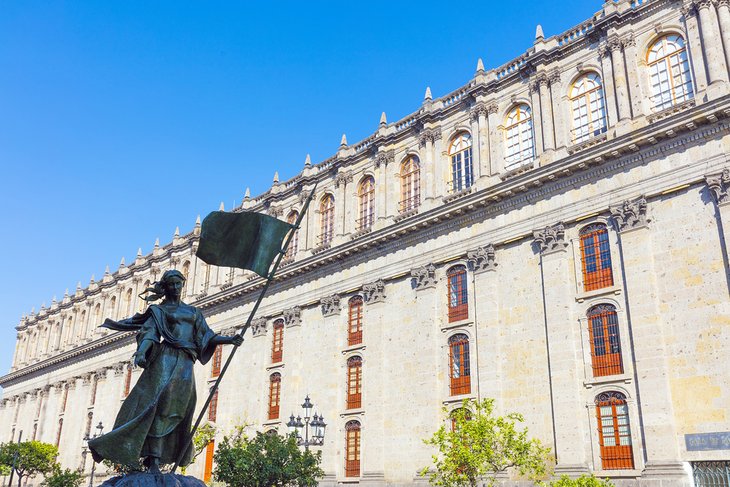
The Plaza de Armas is only a short distance away from the Regional Museum of Guadalajara (Museo Regional de Guadalajara), which is worth a quick visit.
The museum, which opened in 1918, is housed in a former seminary from the 18th century that also served as a prison and a command center during the War of Independence. But, take note that the descriptions are primarily in Spanish.
Features include a significant mineral collection that contains an 800-kilogram meteorite, 14 dioramas and displays focusing on local fossils and geography, a notable collection of colonial-era art, as well as contemporary and modern art.
Certain rooms can be closed on the day of your visit.
11. The Santa Monica and San Agustin Churches

The majority of Guadalajara's magnificent historical churches are conveniently located near the old city center. A few blocks northwest of the cathedral, one of the most attractive buildings is the 17th-century Church of Santa Mónica (Templo de Santa Mónica). It is distinguished by its Baroque façade, which features twisted columns and intricately carved ornamentation, including grapes, cobs of maize, angels, double eagles, and symbols of religious orders.
The magnificent Church of San Agustin (Templo de San Agustin), which is a portion of a previous monastery with subsequent Baroque flourishes and boasts a wonderful interior with a fine altar bearing an image of the church's patron saint, is also noteworthy. The 17th-century San Francisco, San Felipe Neri, and Aranzazu Churches are three further notable Baroque structures.
12. The archaeological site at Guachimontones
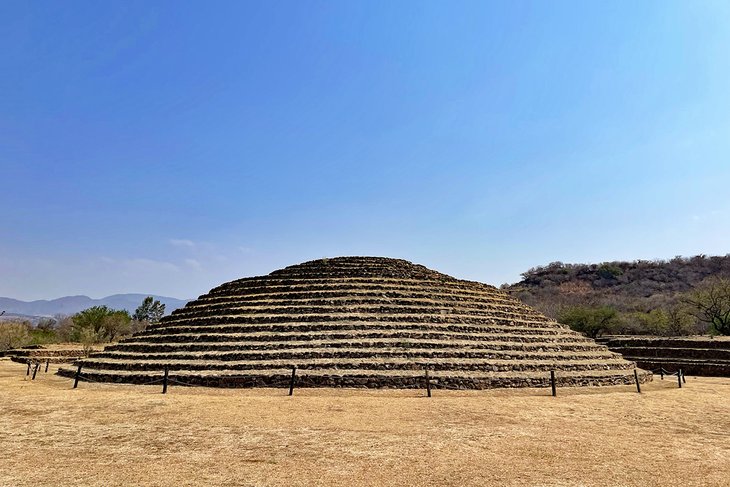
Indigenous cultures have existed in Mexico for thousands of years, the most well-known of which being the Mayan and Aztec cultures.
Yet there are other other indigenous groups in Mexico that have contributed to history. From 300 BC to 900 AD, the Teuchitlan people inhabited what is now the Tequila Valley west of Guadalajara. They left behind impressive constructions that are a fantastic day excursion from Guadalajara.
The distinctive round step pyramid constructions that resemble beehives and seem to spring out of the grassy valley floor are known as the Guachimontones archaeological site. Although there may be more rounded pyramid constructions at other Teuchitlan sites, this is one of the few examples of such a structure in Mexico.
One of Jalisco's most breathtaking sights, but be sure to come prepared with water and good shoes. The ascent to the archaeological site is a little difficult.
13. Jalisco charros
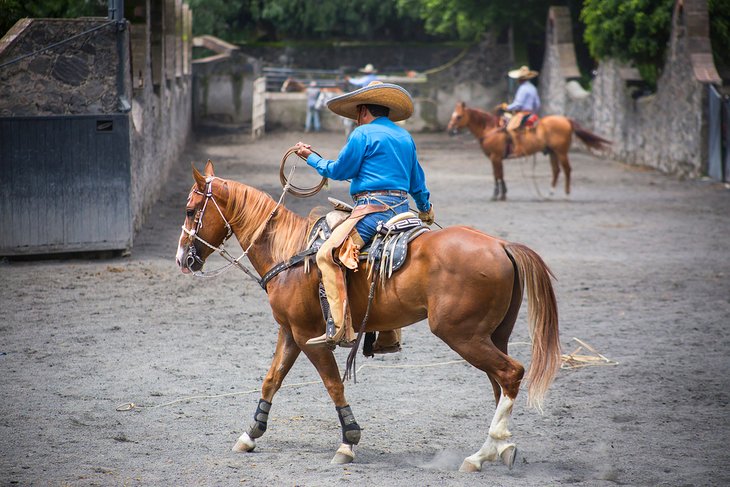
In Guadalajara, Sunday is a particularly special day. The charreria custom brings Guadalajara to life every Sunday. What is charreria, exactly? Charreria has been recognized as Mexico's official national sport since 1933. Although it frequently resembles the American rodeo, there are some key differences.
The history of charreria dates back to the 16th century, when Spanish sailors brought horses to Mexico. The haciendas, mostly in the state of Jalisco, are where the charreria culture first emerged. Haciendas were substantial ranch-style mansions on vast estates with several workers and farmhands. The first charros (charreria contestants) were agricultural labourers who held contests to display their equestrian prowess.
After the hacienda culture had come to an end and the growth of formal charreadas had started, fast forward to the 1920s and 1930s. Nowadays, it is a national sport that is practiced all over the nation and is firmly anchored in Mexican culture and history.
The Lienzo Charro is one of the top places in Guadalajara to witness the charreria competitions. Charros in this place don't get paid; they instead take part in the events out of pure passion. The event always kicks up at noon and includes roughly nine different horse riding and handling competitions. Normally, the event is over by 2:00 p.m., just in time for lunch.
Events involving charreria are usually fun, especially in Guadalajara. A lively crowd of fans fills the stands as they come for the fun, the camaraderie, and of course the competition. Families and friends frequently gather for a substantial supper afterward. It's a day to celebrate culture, history, and family.
14. Tlaquepaque
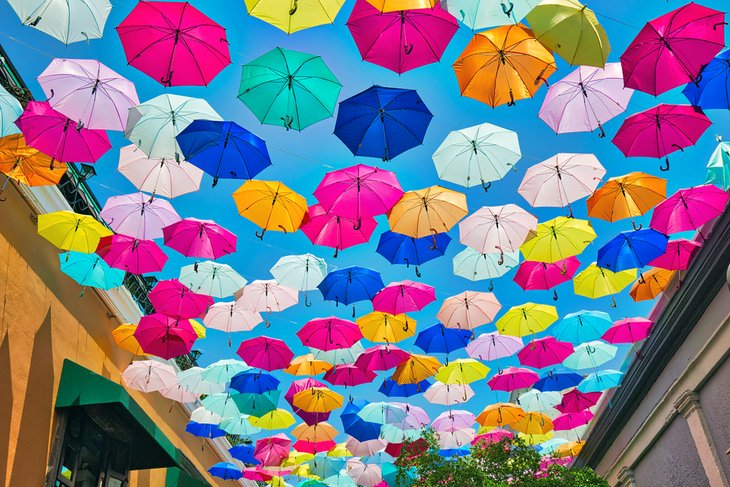
The tiny community of Tlaquepaque is located just outside of Guadalajara. Tlaquepaque is a vibrant, crowded, and full of galleries, boutiques, and eateries shopping and art lover's heaven.
Tlaquepaque, one of Mexico's well-known Magical Cities, has a history steeped in pottery and sculpture tradition, which explains why so many artists and artisans have opened their own stores and galleries there over the years. More than 200 workshops and art galleries are now located there.
Visitors adore meandering this picturesque tiny town's cobblestone lanes, which are frequently bordered by structures decorated with murals, outdoor artwork, or bright flags.
In addition, Tlaquepaque is home to a number of museums, including the Regional Museum of Ceramics of Tlaquepaque and the Panduro Pottery National Prize Museum. The latter is housed in a building that was constructed in the 17th century.
Given Tlaquepaque's proximity to Guadalajara, it is doable for at least an hour and possibly a full day. Yet for those who want to stay a little longer, Tlaquepaque also offers fantastic boutique hotels.
15. Haciendas
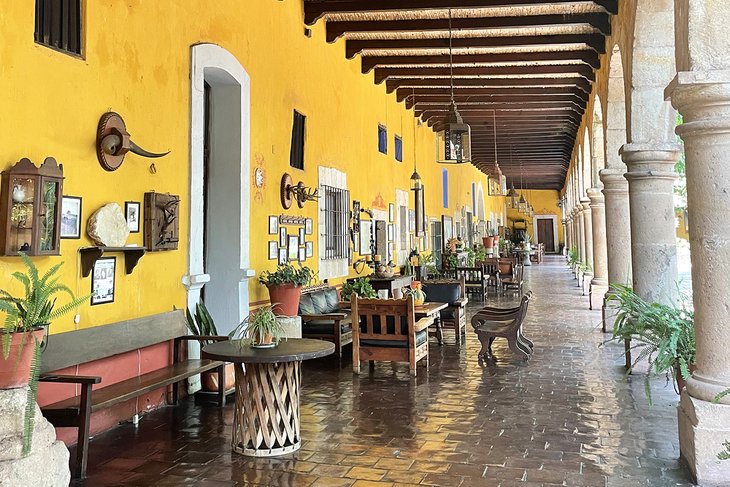
The hacienda culture, which existed in Western Mexico for more than 300 years, is a significant aspect of its history. Haciendas were a crucial part of Mexican culture and society from the time the Spanish arrived until the Mexican Revolution.
Despite the long-gone hacienda culture, many of the old structures are still standing. Many of them have even been transformed into opulent hotels after being rebuilt and modernized for the twenty-first century. A visit to a stay at one of these haciendas outside of the city offers such a fascinating look into the history of Jalisco and the region around Guadalajara.
Hacienda El Carmen Hotel & Spa, which is roughly an hour from Guadalajara, is one of the most well-known haciendas. The 16th-century structure, which is situated on a sizable plot of ground, has been owned by the same family for many years. It is now a stunning hotel with a fantastic restaurant, spa, horseback riding, and magnificent views of the surrounding farmland and rolling mountains.
Another old hacienda that has been turned into a boutique hotel is the Villa Ganz Hotel Boutique in the city proper. This mansion is located in the thriving Lafayette district, which is popular for its art galleries, museums, restaurants, and shops.

